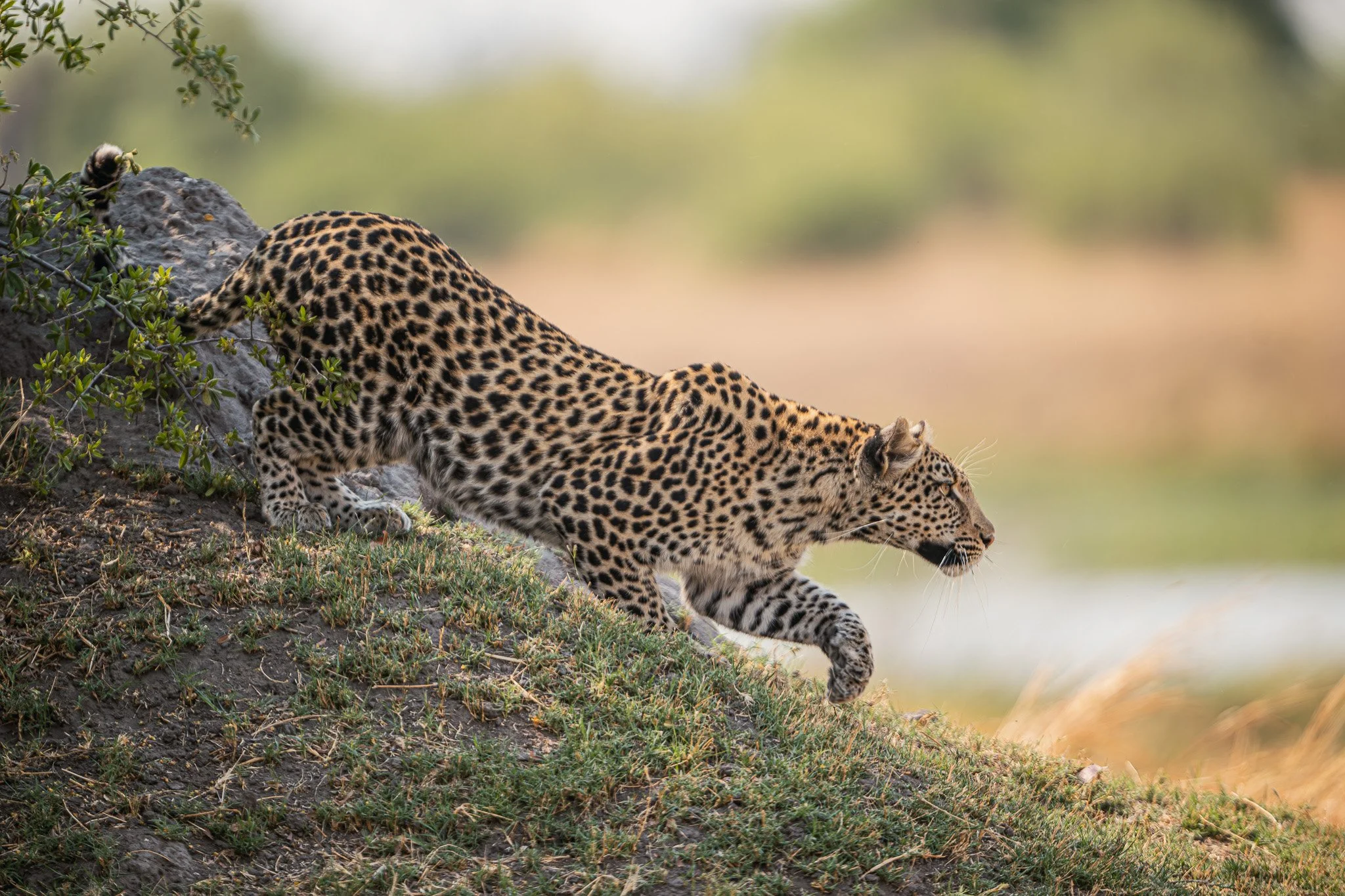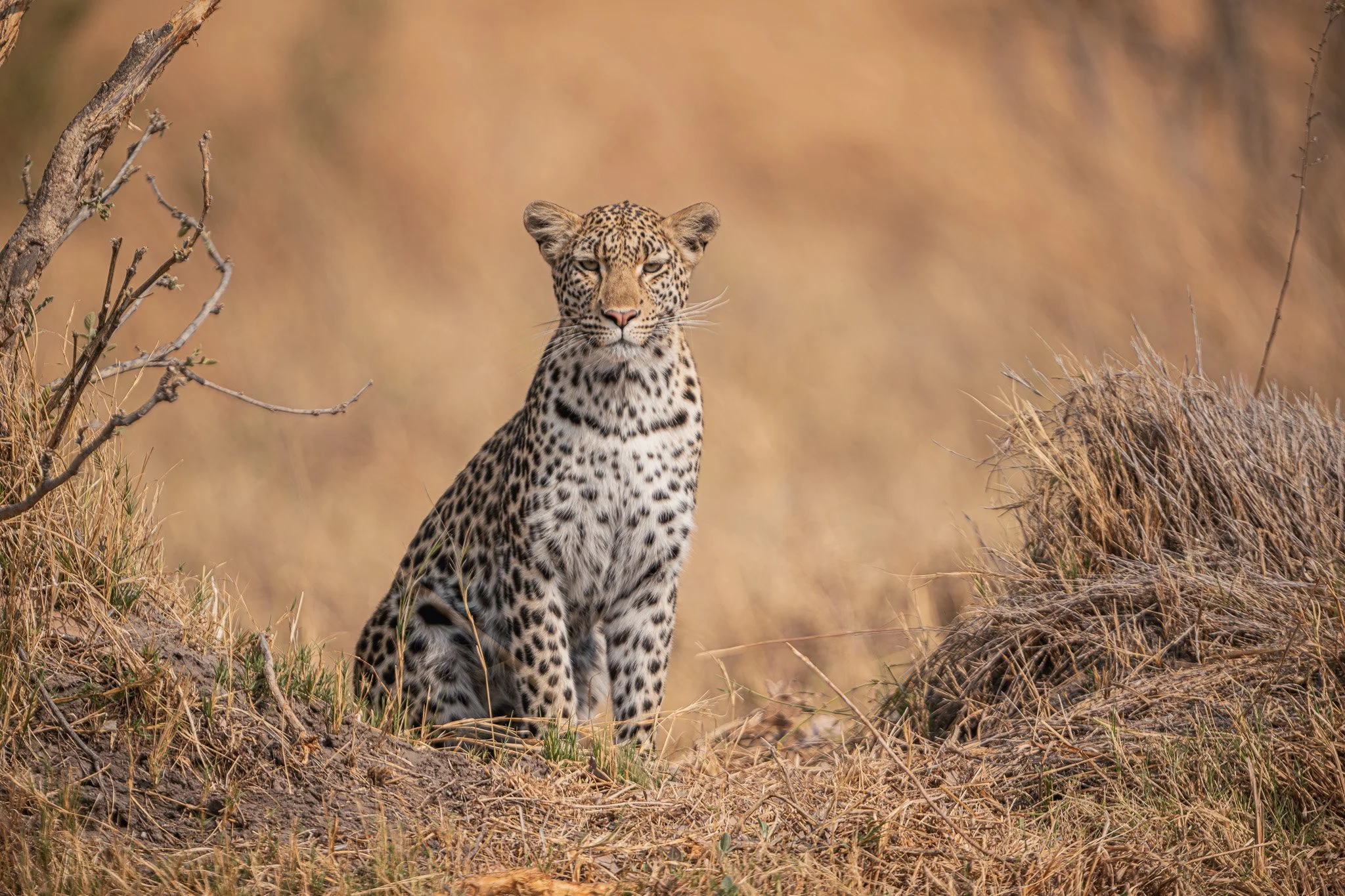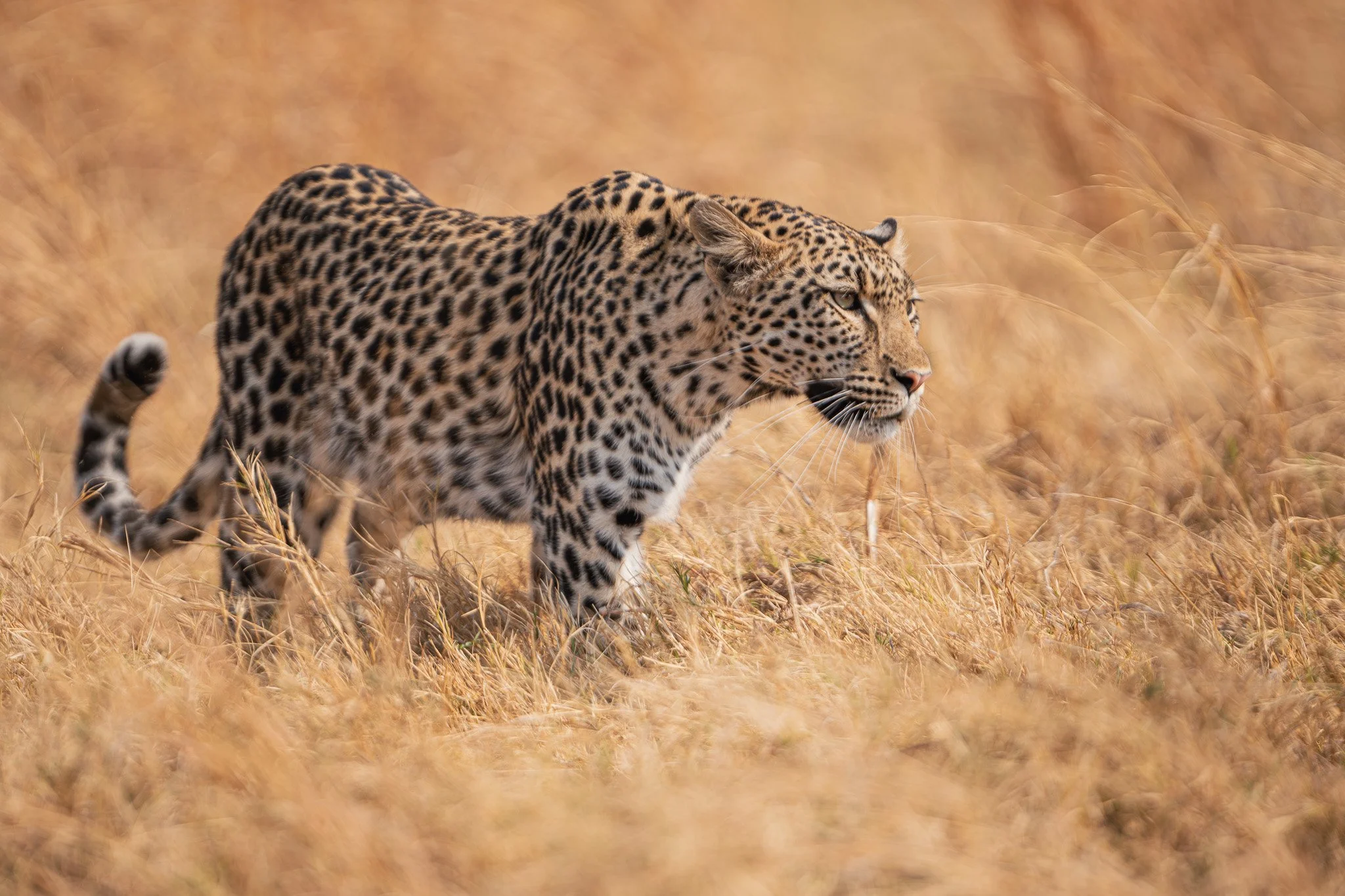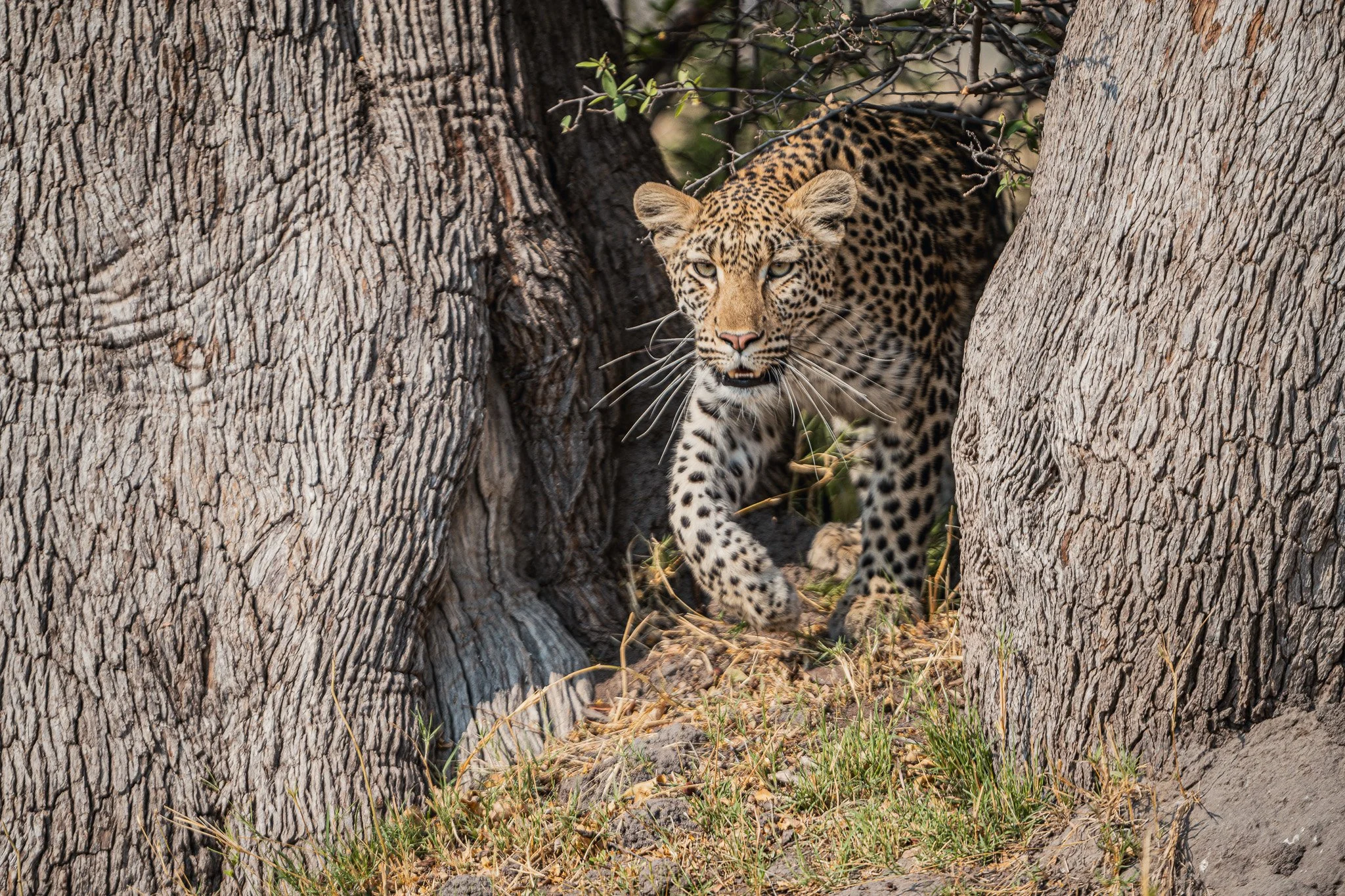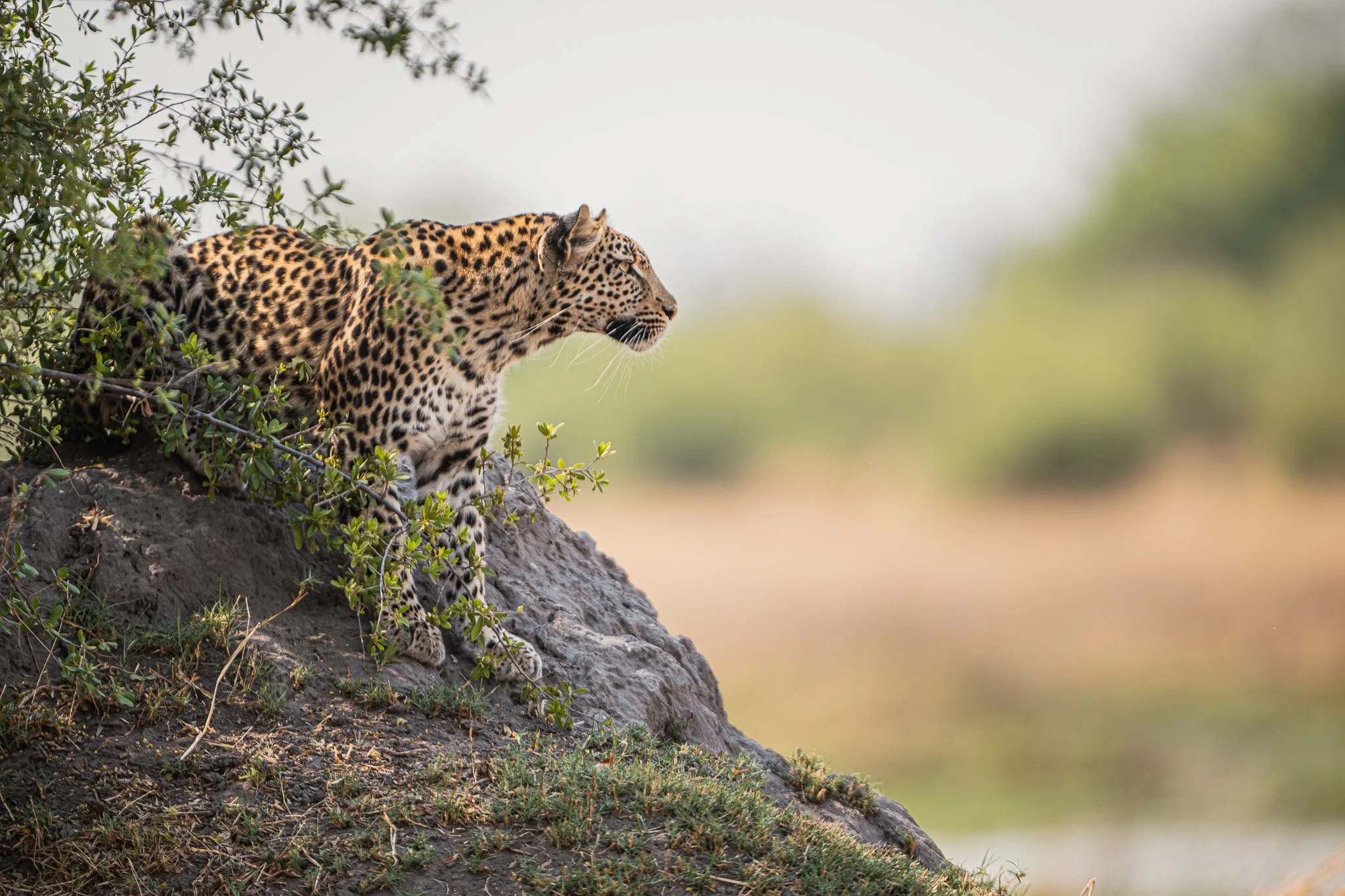Leopardess in the Okavango
The Okavango Delta in Botswana is an ecosystem teeming with wildlife, providing an abundance of exceptional sightings for its visitors. With so much variety within the habitat, from wetlands to woodlands, the Okavango offers a diverse collection of species, big and small.
My favorite species to search for on safari is the ever elusive leopard. The morning radio chatter has us heading towards a mating pair, nestled comfortably in a dense bush. Guided by the guttural sound of the pair, we are able to find the exact bush they’re hidden in, even catching a quick glimpse of that distinctive rosette pattern.
Even though the leopards were actively mating when we pulled up, they were done by the time we positioned our car. Leopards will mate for only a few seconds, every fifteen minutes, for a few days at a time. So, we wait for a few minutes, see the tiniest bit of movement, hear the female growl, and know that they have once again mated.
After sitting with the leopards for over an hour, they begin to tire and slow down as the temperature rises. We decide to leave them and see if we can find anything else in the area.
Not too far away, we stumble upon a young leopardess, who happens to be the daughter of the mating female. Banda, my guide for the week, says the young female is approximately a year and a half of age, suggesting that she is just starting to venture off on her own.
Oftentimes, a mother leopard will give her daughter a small portion of her own territory. This provides the kin with a safe place for her to start her independent life. And as she matures and becomes more comfortable in the wild, she will begin the process of expanding her territory.
This young female is striding confidently through the tall grass, when all of a sudden she slows and lowers herself to the ground. She has spotted a herd of impala in the distance. Leopards are opportunistic hunters, and will feast on everything from rodents and birds to their preferred antelope.
But to see an eighteen month old leopard, who is just beginning her independent journey in the wild, take on such an ambitious hunt was absolutely incredible.
She knows to stay low and hidden — the camouflage coat of a leopard allows them to go unnoticed when they make use of cover. She utilizes bushes, tall grasses, and will even climb trees in an effort to shadow her prey.
Leopards hunt by ambushing or stalking their prey. Regardless of which approach they take, it is essential that they stay hidden and are patient, waiting for the prey to come within an appropriate distance for the individual to pounce, claw, and bite, until they take the target down.
Our cat is taking her time, slowly creeping from bush to bush as the impala leave the watering hole, and head inland. They are alert, but don’t seem to suspect that they are being stalked. She watches over the herd from a nearby tree, waiting for the perfect opportunity… Once the antelope begin to relax and focus their attention on grazing, she gets up from her branch and leaps down the trunk of the tree.
Unfortunately, even though her movement is impressively swift, a nearby bird spots the leopard and voices an alarm call, notifying the impala (and every other nearby animal) of the big cat’s presence. The whole herd scatters, running away to safer grounds.
We leave her as the afternoon approaches. She’ll rest during the heat of the day, under cover, in an effort to stay cool, and attempt another hunt in the evening to satisfy her lingering hunger. Despite their athleticism and stalking skills, most leopard hunts are not successful. These cats have an estimated success rate of about twenty percent, though it differs depending on the individual and location.
Although I would’ve been thrilled to see this young leopardess secure a hearty lunch for herself as she begins this new life of independence, I am always awestruck when I encounter these incredible cats. They exude confidence, courage, and intellect. Not to mention, they might be one of the most stunning species in the animal kingdom.
